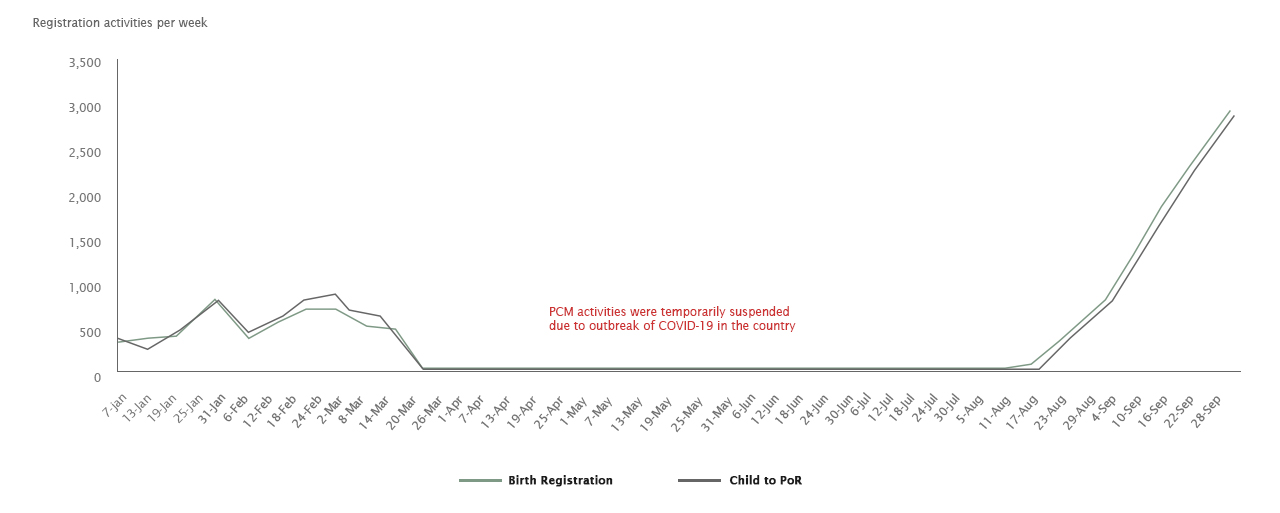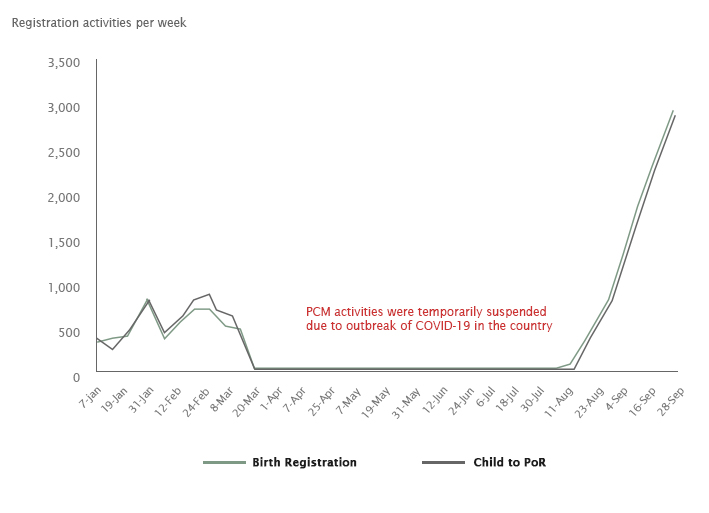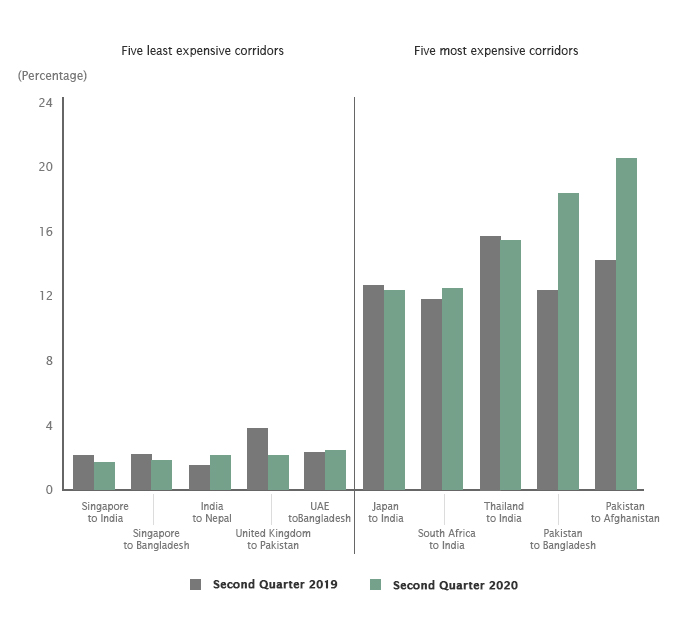Afghan refugees in Pakistan were living in a precarious situation before COVID-19. After the pandemic hit, the initial response swiftly brought about restrictions on public gatherings, closure of markets and businesses, bans on public transportation. There was also a noteworthy 6 month suspension of processing activities for Proof of Registration (PoR) cards (March-September 2020). These developments acutely exacerbated the situation many Afghan refugees were living with in terms of earning a living, accessing essential local resources and maintaining familial economic linkages. To get a better grasp of the situation, we will first break down the demographic data before diving into the response and recent developments.
Overview of Afghan Refugees
In Pakistan, Afghan refugees can be broadly divided into four main groups: Proof of Registration (PoR) cardholders, Afghan Citizens Card (ACC) holders, unregistered Afghan refugees and Afghan passport holders with Pakistani visa. According to the UNHCR and the Government of Pakistan, there are currently 54 established refugee villages and the nation hosts approximately 2.8 million Afghan refugees overall. Of these, about 1.44 million Afghan refugees were registered in 2020 (compared to 1.42 million in 2019) while the remaining population consists of “a similar number of Afghan nationals with a different status”. In February of 2020, Commissionerate for Afghan Refugees was cited by news portal, Xinhua, that approximately 500,000 Afghans are living in Pakistan without a PoR card or an ACC. However, as of January 2021, Minister Sheikh Rashid Ahmed declared that about “800,000 Afghans are living in the country illegally”.
Ultimately, these estimates can only give an approximation of the total number of Afghan refugees in Pakistan. Actual numbers could be higher than the numbers given by official sources because many Afghan refugees abstained from the last census conducted in 2017. Additionally, there is no count of newly born children of Afghan refugees available during this period, which are unofficially claimed to be around 60,000 a year.
Registered Afghan refugees (PoR cardholders), can be found living in Refugee Villages (RVs) or in urban settlements where they live alongside the Pakistani population. In Pakistan, 69% of PoR cardholders live in urban areas and the vast majority reside in the provinces of Khyber Pakhtunkhwa (58%) and Balochistan (23%). Additionally, 85% of registered Afghans are Pashtuns and 54% are male.
Share of Registered Afghan Refugees (%)
Majority of Afghan population is in urban settlements, concentrated around Khyber Pakhtunkhwa




Sources: EASO, UNHCR
Impact of COVID-19
While the population of Afghan refugees residing in Pakistan has remained stable, increasing marginally since 2016; 2020 saw the lowest number of voluntary repatriations since 2002, plummeting from 6,220 to 28.
Afghan Refugee Registration vs. Repatriation (#)
Voluntary repatriations of Afghan refugees fell to an all-time low in 2020

Source: IOM, UNHCR, EASO
Approximately 80% of registered Afghan refugees are daily wagers, the working segment of the population that has been hit the hardest during the coronavirus pandemic as those in refugee villages and urban areas alike underwent lockdown. UNHCR’s COVID-19 response consisted of an emergency cash programme, communications outreach on COVID-19, water/sanitation/hygiene efforts (WASH) and PPE procurement. From a coverage standpoint, the progress achieved under the circumstances was significant. However, it potentially missed particularly vulnerable unregistered Afghans in urban areas. UNHCR’s external updates and local reports from sources such as TNN (Tribal News Network) demonstrate a particularly focused response on RVs in prominent provinces such as Khyber Pakhtunkhwa in regards to WASH efforts as well as COVID-19 educational sessions/meetings.
UNHCR’s emergency cash programme (a one-off grant of PKR 12,000 (~USD 77)) supported a total of 450,000 registered Afghan refugees in 55 out of 130 districts in Pakistan via a partnership with Pakistan Post. Due to issues of disbursal and lacking documentation, it is very likely that nearly two-thirds of all Afghan refugees, especially those outside of RVs without PoR cardholder status were left out. Communications outreach was the only UNHCR activity that explicitly mentioned any engagement with urban areas, and this activity benefitted approximately 5,600 refugees across all of Pakistan as of November 2020.
Mind the (Registration) Gap
Refugee registration has been a particularly touch-and-go issue recently in Pakistan as the government launched a new visa regime that enables documented and regulated entry and stay for Afghan nationals. Registration activities were suspended between mid-March to mid-August due to the outbreak of COVID-19 in the country, and picked-up in September of 2020. Then over 200,000 Computerized National Identity Cards (CNICs) were deemed fraudulent, placing the anticipated document renewal & information verification exercise (DRIVE) as top priority for UNHCR in 2021.
Afghan Refugee Registration Activities per week- January-September, 2020
Registration activities for refugees in Pakistan were suspended at the height of national lockdown


Source: Afghan National Registration Database (ANR) – 2020
As exclusion from a significant variety of pandemic-related resources seems to be quite closely tied to PoR cardholder registration, the UNHCR and the Government of Pakistan has a monumental task ahead to not only re-verify current PoR cardholders but also try to account for the needs of the remaining 800,000 unregistered Afghan refugees.
Squeezed from Both Sides
While many Afghan refugees in Pakistan were left out of accessing COVID-19 resources and response, remittance fees also sky rocketed. They jumped well over 20% in 2020, making the Pakistan to Afghanistan remittance corridor one of the most cost-prohibitive in the world according to the World Bank. This occurred while remittances sent to Pakistan were heavily incentivized and able to soften some of the negative economic impact resulting from lockdown restrictions and loss of opportunity for the rest of the country’s citizens.
Costs of Sending Remittances to South Asia
Cost of sending remittances through the Pakistan-Afghanistan corridor was over 20% in Q2 2020


Source: World Bank Remittances Price Worldwide database.
Note: Cost of sending $200 or equivalent
South Asia was the least costly region to send USD 200 to, for example, the United Kingdom to Pakistan corridor was cited as one of the least expensive remittance routes in 2020. With the loss of daily-wage labor, lack of aid and outreach to urban communities, and then this spike in remittance fees, Afghan refugees were squeezed from both sides. The economic resiliency of Afghan refugees in Pakistan took a severely devastating blow in 2020 and many displaced families will very likely feel the aggregate impact of these developments well into 2021.
Disclaimer: The article is written in the author’s personal capacity and the findings and opinions expressed here do not necessarily reflect the views of the Abt Associates



